No matter your product, industry, or company size, marketers all have the same goal: to grow their brand, connect with customers, and charm them down the path to purchase. But achieving that goal looks different, depending on the type of product/service you’re selling—and who you’re selling it to. Although most people think about the business-to-consumer (B2C) approach when they think of marketing strategies, business-to-business (B2B) marketing requires its own unique strategies. What exactly does that look like? Today we’re breaking down the difference between B2B vs. B2C marketing and giving you our insider tips to make B2B as easy as B2C.
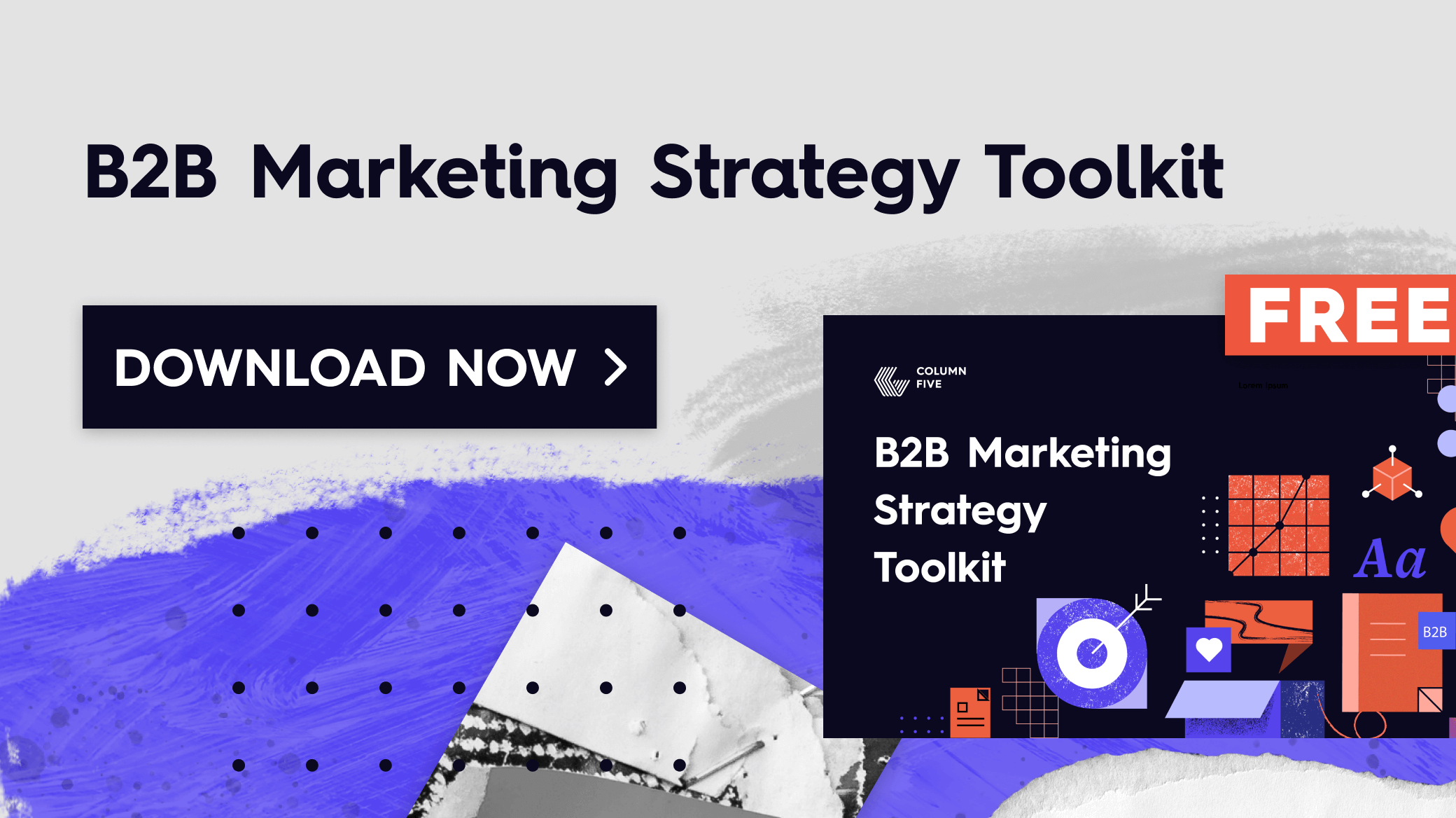
What Is B2C marketing?
B2C stands for business-to-consumer marketing, meaning you’re a brand selling a product or service directly to a consumer (usually a single consumer). This is the type of marketing we encounter most.
B2C transactions are immediate and almost exclusively driven by the buyer’s emotion, whether they’re buying a moisturizer, candy bar, car, or pair of sneakers. The interactions with a brand are usually direct and transactional. They want something sweet, they buy the candy at the checkout line. They need a new car, they test drive a few and buy the one they want.
While you still face the usual challenges in marketing (e.g., understanding your audience’s specific needs, crafting compelling content, etc.), B2C has a more simple and direct buyer journey. Purchase decisions are driven by the individual’s emotion, so there is a fairly short purchase time with fewer barriers to purchase. This makes the cost of marketing (in both time and money spent) much lower than B2B.
What Is B2B Marketing?
B2B stands for business-to-business marketing, which means you’re selling a product or service to an entire organization. B2B is more challenging and complicated, due to several reasons.
1) Smaller Markets
Because the products are more specific than, say, sneakers or toothpaste, the markets are significantly smaller (think 50 companies vs. 5 million consumers). This means there is much more competition and fewer opportunities to sell in general. However, although the pool is smaller, the payoff is much larger. Closing that deal is just a much heavier lift.
Additionally, B2B brands don’t have the name recognition that consumer brands do (e.g., Starbucks, Cover Girl, Nike), so you are often building brand awareness from scratch.
2) More Stakeholders
In B2C, you’re selling to one person—plain and simple. In B2B, you’re selling to one person who represents multiple people within their organization. Although that individual may be your first point of contact, they are just one stakeholder among many, and they are not the sole decision-maker. According to Gartner, 93% of B2B buyers made their purchase decision as a result of a larger organizational initiative.
In fact, over the last decade, the number of stakeholders involved in B2B buying decisions has dramatically increased.
Ten years ago, the average number of stakeholders involved in a B2B buying decision was 5. Today, it is 11 (and sometimes up to 20).
In addition to so many stakeholders, individuals feel much more stress when advocating for a B2B buying decision. They are not spending their own money; they are spending a big chunk of their company’s money, which comes with an enormous amount of pressure.
3) Longer Sales Cycle
In B2C, purchase decisions happen fairly quickly, whether driven by need or want. Unfortunately, in B2B, because there are so many stakeholders involved (and the product/service price tag is significantly higher), the sales cycle is much, much longer—and more complicated.
A Typical B2B Buying Journey
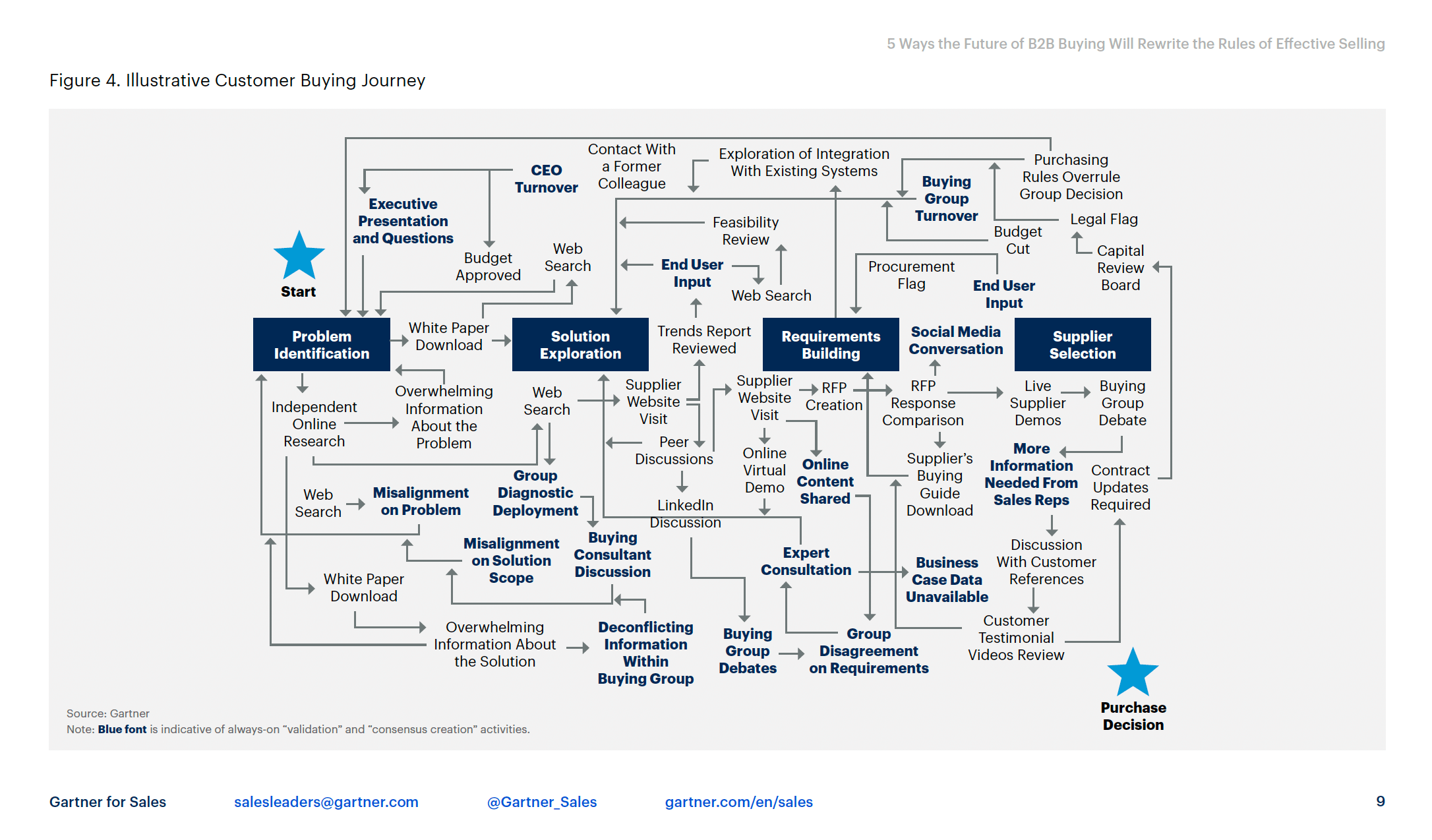
To maintain momentum and move people down the path to purchase, marketers need to build trust among different stakeholders, nurture leads through consistent touchpoints, and create a seamless buying experience at every stage.
In B2C marketing, you get quick (albeit short-lived) success. In B2B, you’re playing the long game.
What Do B2B and B2C Have in Common?
While B2B and B2C marketing require different strategies, there is one thing they have in common: They both rely on emotion. Sure, B2C marketing is more about immediate and individual emotional decisions, but in B2B you’re still marketing to humans with goals, pain points, and desires.
One of the biggest mistakes B2B marketers make is treating the consumer as though they are a faceless entity. Your customers are still people with needs and wants.
If you don’t understand your customer’s core emotional needs, you can’t build a relationship—no matter what you’re selling.
Note: As more companies expand to include both B2B and B2C offerings, the lines are starting to blur between B2B and B2C. However, although the core emotional needs are the same, they take different angles. For example, in B2C you can sell a vacation to a burned-out employee by presenting it as an escape from their day-to-day frustrations. In B2B, you can sell a solution that will make their day-to-day work less frustrating. The core emotional need/pain point is the same (frustrating work), but the angle is different.
How to Master B2B Marketing
Although B2C marketing may be easier, B2B marketing requires you to get more creative in how you connect with your audience. To make your marketing as effective as possible, reassess the foundations of your strategy, and ensure you’re accounting for your audience’s unique needs.
- Map your buyer journey. Since the B2B buying journey is significantly more complex, you need a strong content ecosystem that delivers the right message at the right time. (Note: B2B buyers are increasingly relying on digital channels over traditional sales reps, so consider the infrastructure required to accommodate their needs.) Start with our free template to map your buyer journey, create personas to identify their pain points and desires, and find out how to create strong brand messaging that tells a consistent story.
- Invest in quality content. If you’re asking your audience to spend a pretty chunk of change, you need to spend more time demonstrating that you understand their challenges, proving your value, and showing them why you are the product/service they should choose (over your competition). Use empathy to create content that reinforces your value, and pair the right message with the right medium.
- Differentiate yourself. B2B buyers also suffer from content shock, as they are inundated with content from a variety of sources. To ensure you don’t become white noise, conduct a content audit of your own content, as well as your competitors, to get a snapshot of your strengths and weaknesses—and identify opportunities to steal the spotlight.
- Be consistent. B2B decisions don’t get made overnight, and one piece of content isn’t likely to seal the deal, so you need to provide a steady stream of content that reinforces your brand story over time. Create a steady publishing cadence, apply your brand to every piece of content you create, and demonstrate your expertise to build trust over time.
- Get extra support. If you’re struggling to produce quality content—or lacking the experts needed to create that content—consider using a freelancer or agency to help. See our tips to find an agency with your expertise, find out how to vet them, or find out what it’s like to work with us on your content strategy.
Most importantly, don’t get discouraged if your efforts don’t pay off immediately. B2B is a long game, and although it takes longer to pay off, remember that the payoff is much greater.


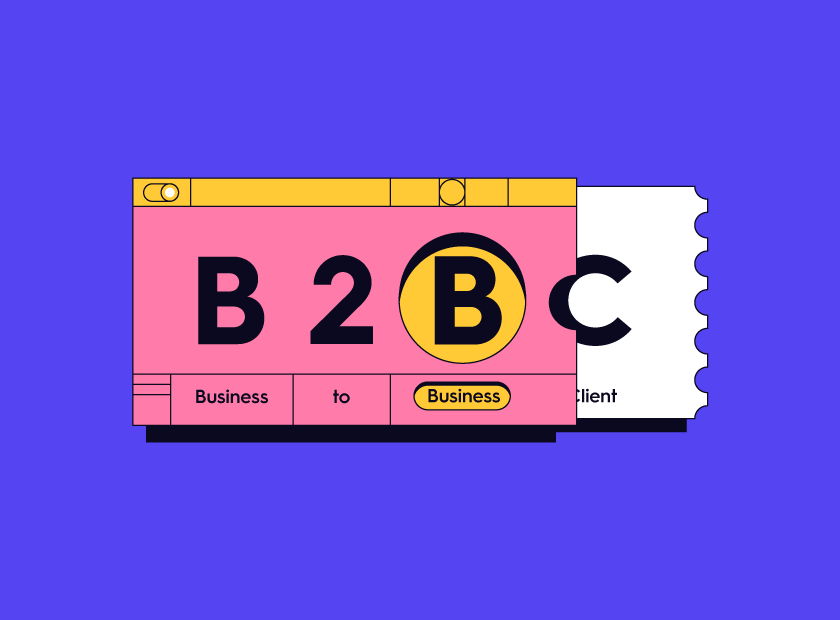
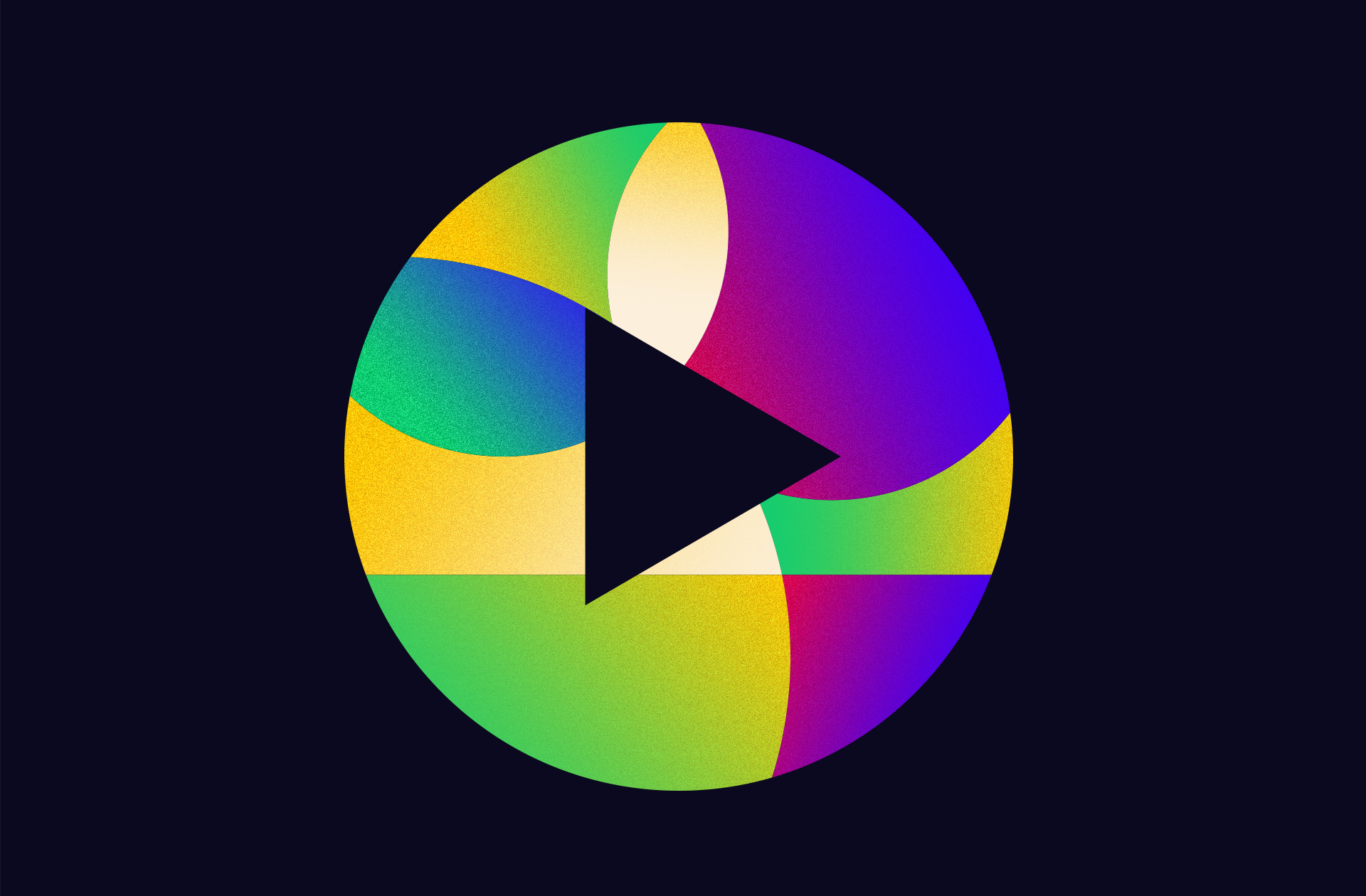
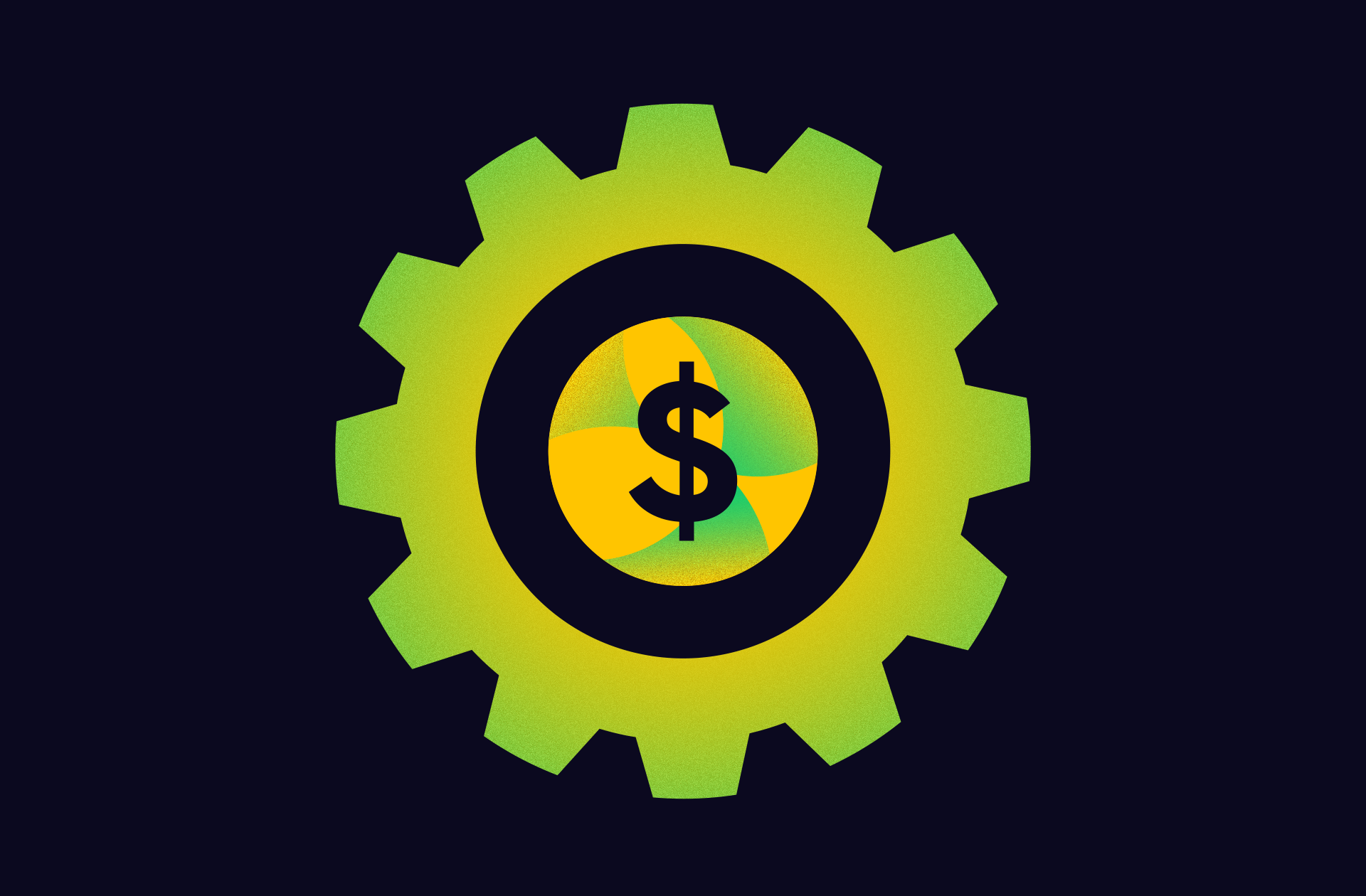

Interesting